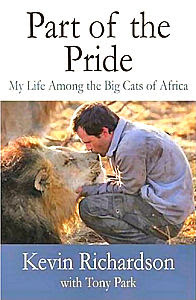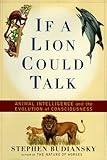This is a story about just one of my own cats. They're all unique personalities, but this one was a standout. He was the happiest cat in the world.
He was gray--the purest gray you have ever seen on an animal. And he had a white chest, to give him the classification of a tuxedo cat, plus a splash of white on his nose and chin.
We found him at the county animal shelter. He was one year old at the time. His previous owners had given him up because someone in their family was allergic to him. It was definitely their loss and our gain.
We took him home in a canvas bag that the shelter volunteer had assured us was escape-proof. Five seconds into the car ride, he popped out of the bag. All cats must earn their names, and this one had quickly earned his: Houdini.
When we arrived home, our other cat, a pure black cat named Lucky, was sleeping on the couch. Violating all known wisdom about how to introduce a new cat to a household, we threw Houdini onto the couch next to Luck. Luck reacted about how you'd expect, and ran upstairs. For three days Luck expressed suspicion, distrust, and general displeasure at this invasion of his house, during which time Houdini always responded in a way that obviously said, "I'm happy, why aren't you?" Houdini won. Houdini always won. The two cats became the best of friends.
That pattern was to be repeated by Houdini all his life. He would burst into a room, spring onto your lap, or sometimes just jump straight up in the sure faith that you'd catch him in your arms, and then assuage whatever adrenaline he'd caused to flow with a loud purr that never stopped. He loved life and loved everyone, and he just naturally assumed that everyone loved him. I never once saw him angry. He never got upset at other animals in the vicinity, even other cats. Everyone was a potential friend to him--cats, dogs, squirrels, people. He was no fool; even at an advanced age he outdistanced a dog that jumped into our yard with evil intentions. But everywhere he went, even at the veterinarian's office, he perked up at the sight of other animals and was eager to meet them. The vet never could hear his heartbeat because Houdini was always purring.
And Houdini loved to watch people work. Houdini's world was already perfect, and it was just so wonderful to him to watch people make it more perfect. When I constructed book shelves, he was there to make sure every measurement was exact, every screw driven in straight. And purring his approval all the time.

When my wife would work in the garden, Houdini would be there. You could see his double enjoyment of sitting in the warm sun and watching my wife work. Anyone could just immediately tell this was a happy cat. Houdini even made friends with the squirrels who lived in our trees. It was a remarkable sight to see Houdini and a squirrel sitting close together on the grass, apparently having a conversation that we were not privy to.
As much as I wish that a life force like Houdini could exist forever, old age snuck up on Houdini like I suppose it does on anyone. Oh, there had been signs--like, lately you had to bend over to catch him when he jumped straight up to your arms. But he still was always the same Houdini, always happy, always purring.
Houdini had had a history of infections in his mouth. Some antibiotics and a lot of struggling to get them into him always had put him right. But the time inevitably came when even the antibiotics couldn't kick-start his aging immune system any more. It was such an infection that would take Houdini from us soon.
Despite our best efforts, Houdini got weaker and weaker. One day, toward the end of March, we were having an unusually warm spell, so I took Houdini outside to enjoy some time in the sun. I placed him on the little landing outside our kitchen door, about 5 feet high off the ground, and I stood on the ground next to him, to protect him. In his current condition he was weak and unsteady on his feet.
As he was lying there with me standing guard, I was startled by a loud rustling sound at the back of our yard. I quickly realized the sound was made by a squirrel, who was charging full speed up the yard, directly at me! Never had any of the squirrels allowed me to come within 20 feet of them, so all sorts of scary thoughts, of rabies and such, raced through my mind. But something told me to do nothing, even as the squirrel ran up to me, right up to my feet, and then ran past me and up a tree stump directly across from the kitchen landing--and the same height as the landing. The squirrel just sat there, looking intently at Houdini. Houdini was too ill to return the look, but I can only conclude that the two friends could still carry on one last wordless conversation. After all, something had told me not to fear the charging squirrel. I felt privileged to be a witness to the event, and grateful for the sun and warm weather that had prompted the occasion. Houdini's squirrel friend stayed and watched Houdini with me for quite some time. But as the sun moved, Houdini was left in the too-cool shade. Houdini meowed softly to be taken back in to the warm house. The squirrel watched me pick up Houdini and carry him into the house.
Whether you believe animals communicate telepathically, or just enjoy each other's company, I was impressed by this obvious display of friendship, and I was glad the two friends had one last chance to see each other.
Houdini died peacefully on our couch a few days later. Friend to everyone that wanted him for a friend, he was definitely a life force that cannot be forgotten.
 While in our nortwestern states, the gray wolf fights for survival, a little-known subspecies, the Mexican Gray Wolf, fights a very desperate battle. As far as we know, there are only 52 Mexican Gray Wolves left in the wild.
While in our nortwestern states, the gray wolf fights for survival, a little-known subspecies, the Mexican Gray Wolf, fights a very desperate battle. As far as we know, there are only 52 Mexican Gray Wolves left in the wild.























 For today's article, I yield this space to George Wuerthner, wildlife biologist and former Montana hunting guide. He has written
For today's article, I yield this space to George Wuerthner, wildlife biologist and former Montana hunting guide. He has written 









